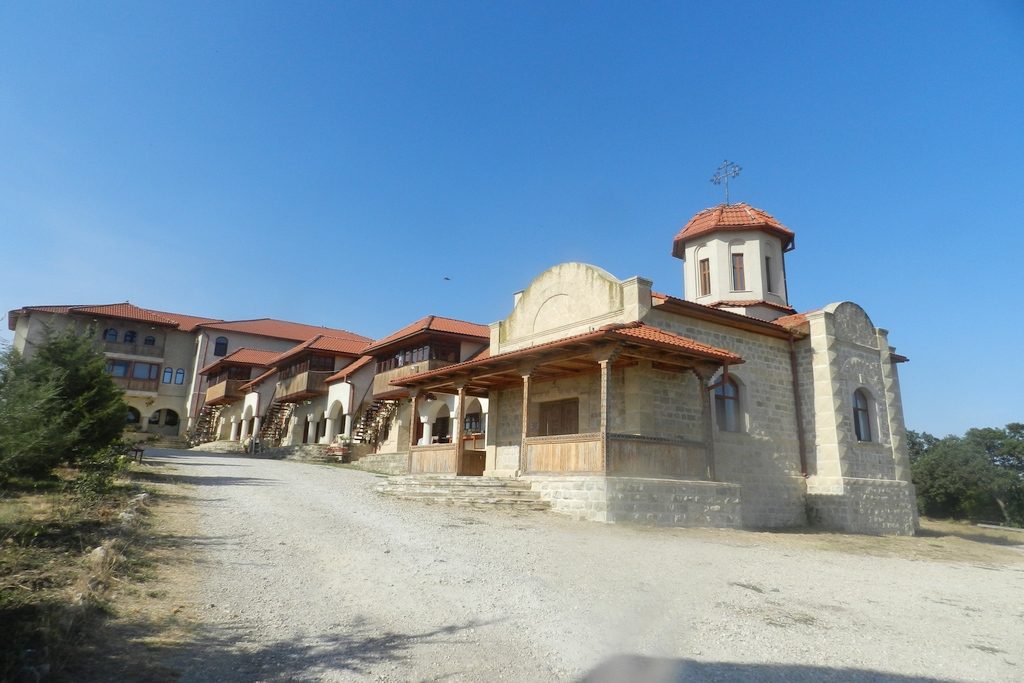

The monastery was founded in 2003, the endowment reactivating the old monastery floor from the “barriers of the Cassians and of the Caves” in which there lived three saints from Dobrogea: John Casian, Gherman the Roman and Teotim I. The sanctuary is built from white calcareous stone – labor specific to the area. Together with the church, the complex also holds two administrative buildings, with living rooms and dining rooms. The extensions of the monastery seem to be twins, both having at the ground floor a covered terrace, three columns and three arcades, and upstairs a balcony covered by a triangle framing, with exterior access on a wooden staircase.
Following the construction tradition with regards to the monastery endowments – with aspects of real monastery citadels – the ensemble with a four-square shape, has been equipped with spire, museum, library.
St. John Casian is one of the notable representatives of the patristic literature of the beginning of the IVth century. Born in the year 360 A.D. in Scytia Minor (Dobrogea), he has entered from a young age at a local monastery, after he spent many years at o monastery near Bethlehem and in the Ascetic establishments from Egypt. In the year 400, St. John Chrysostom has ordained (anointed) him as deacon of the church at Constantinople. In the year 415, he is ordained as priest at Rome (where he arrived in order to support St. John Chrysostom, exiled following the persecutions against the Christians. From Rome, le left to Marseille, where he founded two monasteries, one of monks and another of nuns, communities which have been organized after the oriental model.
At the end of a foot path which leaves from behind the monastery, it is situated the Cave Saint John Casian. On the path it is found the Saint’s Cliff, with the engraving “The Cassian’s barriers and the Cave”. This has been discovered in the year 1912, by the scholar archeologist Vasile Pârvan. At the beginning, the cave was used as a sanctum by the needy hermits in the Cassian land. Gradually, it has been arranged as a space for liturgy ministration. By two steps digging in chalkstone, the cave is segmented similar to the ecclesial space. The cave’s wall made of glossy chalkstone still keep the traces of engravings, a few letters from blurred wards are incised in the calcareous wall. From an engraving there can still be distinguished the word “saint”.
From the plateau of the Cassians you can command all the wilderness of Scitia Minor. The hill and the forest of small oaks carry his name, as well as the valley together with the rocks which keep watch over it. Everything belongs to the Cassian ancestry: the grazing place, the grass and the paths, the village over the Casimcea river, of which it is nothing left but a group of three houses – a village which used to be of noble peasants.
